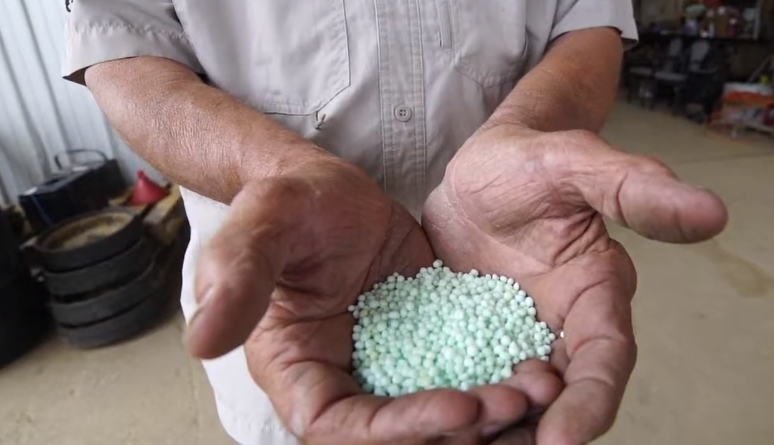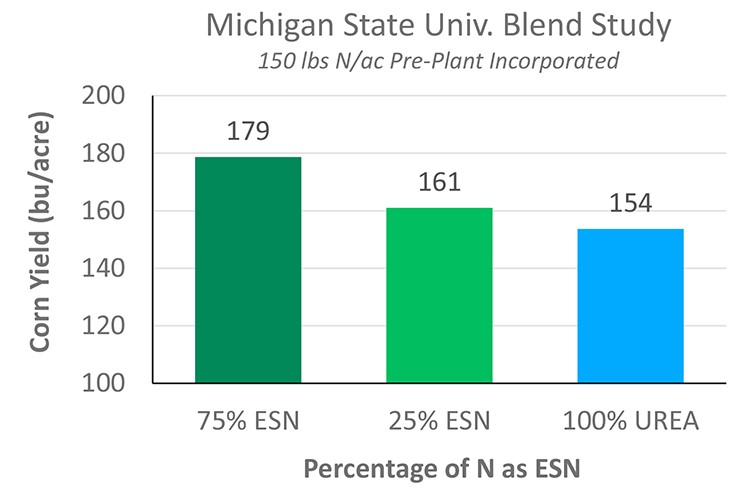Finding the perfect nitrogen blend

Every year, farmers evaluate planting options and associated cost. Nitrogen (N) is an essential input cost for which every farmer must account and plan. Nitrogen cost can influence the fertilizer source they choose or how much they apply. With the advantages that ESN offers to farmers, it should be strongly considered when evaluating their N program.
ESN is often recommended as a percentage of the total N required by the crop. For pre-plant applications, ESN is recommended at 70-90% of the total N. For post-emerge top-dress applications, 50-80% ESN is recommended.
Some ESN users attempt to cut costs by reducing the portion of ESN in the blend and therefore do not realize ESN’s optimum performance and full benefits. Lower percentages of ESN can prevent the crop from maximizing yield and therefore reduce farmer profitability. Hundreds of studies in many environments show that best results and greatest profitability are achieved using the recommended amount of ESN for each crop and time of application. One of these studies, illustrated in the chart below, shows the yield differences from a three-year Michigan State University blend study comparing the recommended ESN blend with a low percentage ESN blend and urea.

Maximizing profits
Let’s compare grower profit between the recommended ESN percentage (75%) and the low-cost blend (25% ESN). The cost of ESN is generally about $0.18-0.20/lb. of N greater than urea and about $0.15/lb. of N greater than UAN (28%). The table below shows cost and profit comparisons between urea, the 75% ESN blend and the 25% ESN blend.
- The recommended blend supplying 75% of the N as ESN produced 25 bu./ac. more yield than urea and 18 bu./ac. more than a blend with only 25% as ESN.
- The 75% blend produced $48/ac. more profit than a 25% ESN blend and $65/ac. more profit than urea.
- Using less than the recommended ESN rate produced some benefit over urea only but failed to produce top yields and profits.
- One pre-plant ESN application (75% blend) averaged 12 bu./ac. more than side-dressed urea (side-dress yields not shown).

By protecting a higher percentage of the total N needed by the crop, farmers have the best opportunity to maximize yields while minimizing N loss to the environment. Applying ESN pre-plant incorporated also eliminates the need for the costs associated with a second nitrogen application.
ESN is a clear winner when examining profit per acre, and the greatest benefit is attained when ESN is used as a high percentage of the total N as recommended.
To make ESN a part of your nitrogen management program, contact an authorized retailer or ESN representative.
Questions or comments? Tweet us @SmartNitrogen.
Disclaimer: Recommendations and price calculations apply to corn and may be different for other crops. Contact your ESN representative to find the right blend for your crop.


